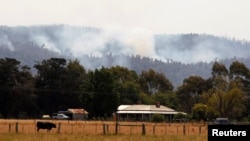Emergency authorities in Australia have released a virtual reality program recreating potentially catastrophic bushfire scenarios. The project aims to encourage residents in the state of Victoria to prepare for extreme danger.
“This emergency warning is being issued for Hare Creek. There is a bushfire at Hare Creek that is out of control. The bushfire is traveling in a north-westerly direction towards Upper Hare Creek,” says the program’s warning.
The virtual reality programs have three different scenarios. They show how residents who leave it too late to respond to an advancing bushfire can face disastrous consequences.
Officials say the technology allows Australians to get a taste of the type of hostile conditions they might face and helps them make better decisions. The simulation urges homeowners to decide early whether to leave, seek shelter, or stay and defend their property.
South-eastern Australia, one of the world’s most fire-prone regions, has been preparing for a scorching weekend with temperatures forecast as high as 45 degrees Celsius.
Victoria state Emergency Management Commissioner, Craig Lapsley, says the bushfire risk in some areas will be extreme.
“Obviously it is about heat, it is about fire. We are going to see a fire today that is going to be hot, dry and windy, and with a wind change late in the day that if we had fires running in the afternoon the wind change will change the direction of the fires and traditionally that is where we lose most of our property after the wind change. So it is one of those days that has got everything in it. Look after yourself, your neighbors, your family, your friends,” Lapsley said.
Australia's most deadly bushfire killed 173 people in Victoria in 2009. However, Australia’s deadliest natural hazard is extreme heat. More than twice as many victims lost their lives in the heatwave that preceded the so-called ‘Black Saturday’ blazes. It is the very young, the infirm, and those over the age of 75 who are most risk from searing temperatures. Heat-related illness, which can occur when body temperature exceeds 37.8°Celsius, includes dehydration, cramps, heat exhaustion and heat stroke. The consequences can be catastrophic, resulting in heart attacks, brain damage and death.
Firefighters have been predicting one of the worst fire seasons on record. They say warmer conditions have been coupled with a very dry winter.





